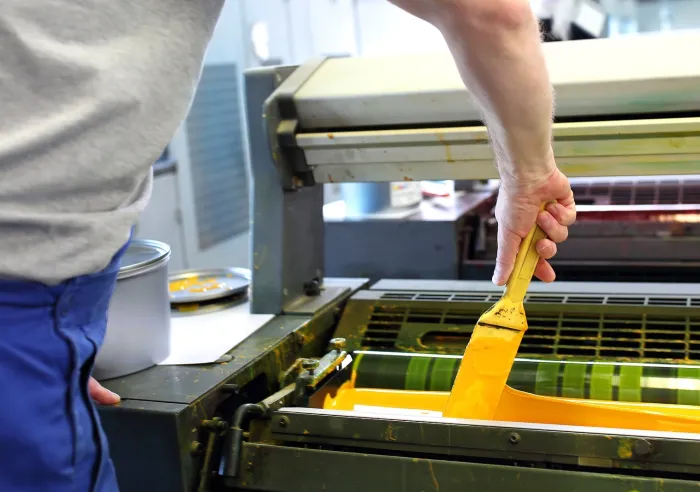Welcome to the ultimate Paper GSM Guide for Offset Jobs. In this comprehensive guide, we will explore the intricate details of choosing the right paper GSM for your offset printing needs. Whether you’re a seasoned professional in the industry or a newcomer, understanding the significance of paper GSM is crucial for achieving the desired results in your printing projects.

What is Paper GSM?
Before diving into the specifics of paper GSM for offset jobs, let’s start with the basics. GSM stands for grams per square meter, and it is a unit of measurement used to describe the weight of paper. In essence, GSM indicates the density of the paper, and it plays a vital role in determining the quality and durability of the printed material.
Why is Paper GSM Important in Offset Printing?
In the world of offset printing, paper GSM is a critical factor that directly impacts the quality of the final product. The choice of paper weight affects the feel, texture, and durability of printed materials such as brochures, business cards, flyers, and more. Choosing the right GSM ensures that your printed materials not only look professional but also withstand the test of time.
Choosing the Right GSM for Your Offset Jobs
When it comes to selecting the appropriate GSM for your offset printing projects, several factors come into play. Let’s explore these factors in detail to help you make informed decisions.
1. Purpose of the Printed Material
The first step in choosing the right GSM is to determine the purpose of the printed material. Are you printing business cards, brochures, or posters? Each type of material may require a different GSM to achieve the desired outcome.
2. Desired Finish and Texture
The finish and texture of the paper are closely related to its GSM. A higher GSM typically results in thicker and more durable paper, which is ideal for materials that need to make a strong impression. On the other hand, lighter GSM may be suitable for materials that are intended for short-term use.
3. Budget Considerations
While selecting the right GSM is essential, it’s also important to consider your budget. Higher GSM paper tends to be more expensive, so it’s crucial to balance your printing needs with your budget constraints.
Common GSM Ranges for Offset Printing
In the realm of offset printing, certain GSM ranges are commonly used for various types of printed materials. Let’s take a closer look at these ranges:
1. Light GSM (60-90 GSM)
Light GSM paper is often used for materials such as flyers and leaflets. It is cost-effective and suitable for high-volume printing projects where durability is not a primary concern.
2. Medium GSM (90-120 GSM)
Medium GSM paper is versatile and commonly used for brochures, catalogs, and posters. It offers a good balance between durability and cost-effectiveness.
3. Heavy GSM (120-170 GSM)
For premium printed materials such as business cards and high-quality brochures, heavy GSM paper is the preferred choice. It provides a luxurious feel and enhances the overall presentation.
4. Extra Heavy GSM (170+ GSM)
Extra heavy GSM paper is ideal for materials that require maximum durability, such as packaging and hardcover book covers. It is the thickest and sturdiest option available.
Factors Affecting Paper GSM Choice
When selecting the right paper GSM for offset jobs, several factors can influence your decision:
1. Printing Technology
The type of printing technology used can impact the choice of GSM. For example, offset printing may require different GSM compared to digital printing due to the differences in ink absorption and drying times. Learn more about the offset printing process and its nuances.
2. Ink Coverage
The amount of ink coverage on the printed material can also affect the choice of GSM. Heavier ink coverage may require thicker paper to prevent issues such as bleeding and wrinkling.
3. Environmental Considerations
In today’s environmentally conscious world, many businesses are opting for eco-friendly paper options. Consider using recycled paper with appropriate GSM for your offset printing needs.
How to Test Paper GSM for Offset Printing
To ensure you choose the right GSM for your offset printing projects, it’s essential to test the paper before making a final decision. Here are some steps to follow:
1. Print Samples
Print samples of your design on different GSM paper to evaluate the quality and appearance. This will help you determine which GSM best suits your needs.
2. Evaluate Texture and Feel
Pay attention to the texture and feel of the paper. Consider how it aligns with your brand image and the message you want to convey.
3. Conduct Durability Tests
Perform durability tests to assess how well the paper holds up under various conditions, such as handling and exposure to moisture.
Conclusion
In conclusion, choosing the right paper GSM for offset jobs is a crucial step in ensuring the success of your printing projects. By considering factors such as the purpose of the printed material, desired finish, and budget constraints, you can make informed decisions that lead to outstanding results. Remember to test different GSM options to find the perfect match for your specific needs.
For more insights into offset printing and related topics, visit our Spot Colors in Offset Printing guide. Additionally, explore Offset Press Components Explained for a deeper understanding of the printing process.

Frequently Asked Questions
1. What is the ideal GSM for business cards?
For business cards, a GSM of 300-350 is typically ideal, as it provides a sturdy and professional appearance.
2. Can I use recycled paper for offset printing?
Yes, recycled paper with appropriate GSM can be used for offset printing. It is an eco-friendly option that aligns with sustainability goals.
3. How does GSM affect printing costs?
Higher GSM paper tends to be more expensive, so it’s important to balance your budget with your printing needs when choosing the right GSM.
This article contains affiliate links. We may earn a commission at no extra cost to you.






